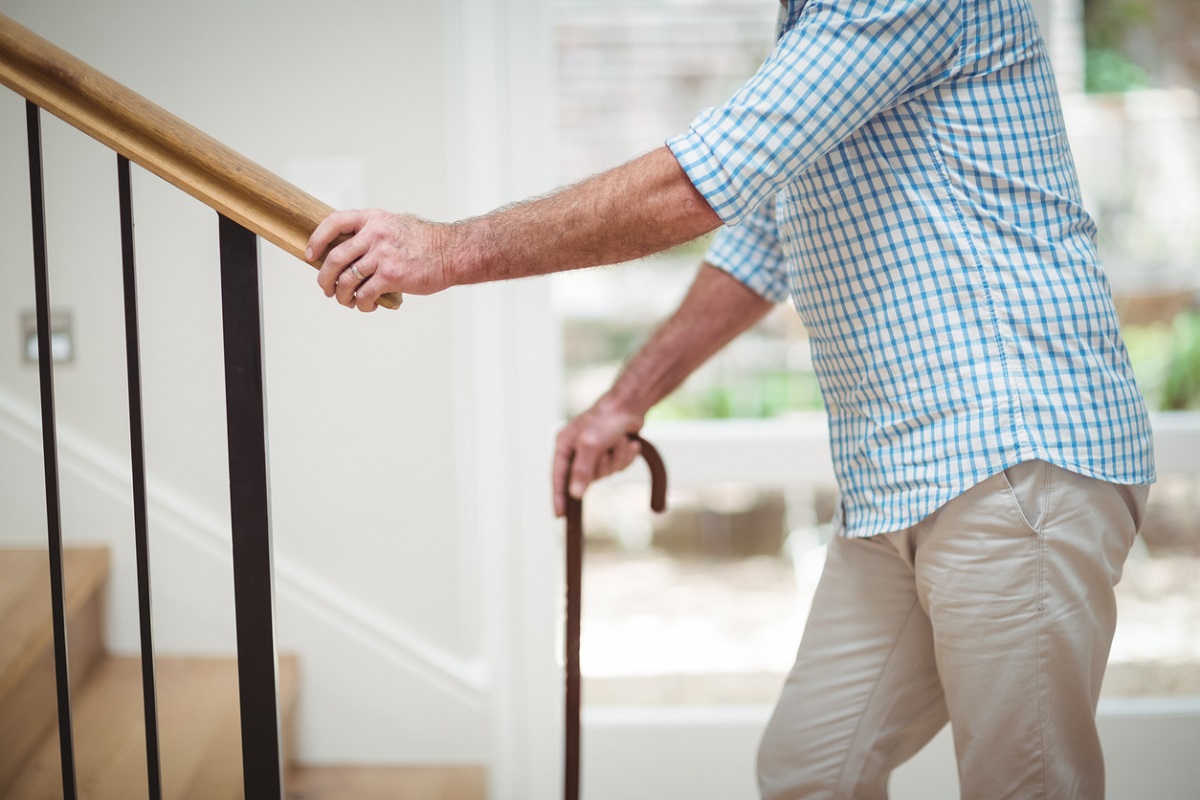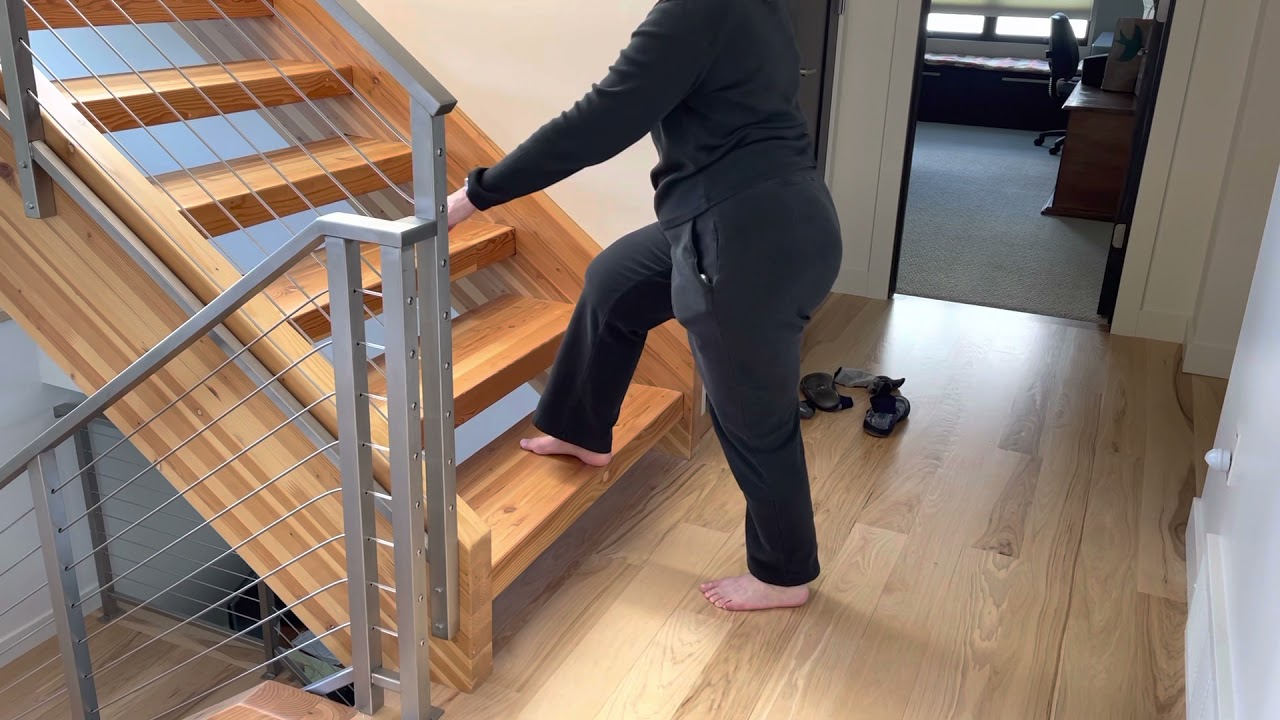

Articles
At What Age Should You Stop Climbing Stairs
Modified: December 7, 2023
Discover the appropriate age to stop climbing stairs in this informative article. Learn about the potential risks and alternative options for staying safe and mobile.
(Many of the links in this article redirect to a specific reviewed product. Your purchase of these products through affiliate links helps to generate commission for Storables.com, at no extra cost. Learn more)
Introduction
Stair climbing is a common activity that most of us engage in daily without giving it much thought. It is a simple task that requires us to navigate the steps, either in our homes, offices, or public spaces. However, as we age, the question of when to stop climbing stairs often arises. Many wonder if there is a specific age at which it becomes necessary to avoid climbing stairs altogether.
In this article, we will dive into the topic of stair climbing and explore the factors that influence when it may be appropriate to modify or limit this activity. We will discuss the importance of stair climbing, physical health conditions that may impact one’s ability to climb stairs, and age-related considerations that come into play. Furthermore, we will explore alternative exercises that can be incorporated into daily routines to maintain fitness and mobility.
Before we delve into the details, it’s essential to understand the significance of stair climbing and how it contributes to our overall well-being.
Key Takeaways:
- Keep climbing stairs for physical and mental well-being, but consider factors like overall health, strength, and accessibility. Modify or explore alternative exercises if necessary, prioritizing safety and individual needs.
- Age-related changes may impact stair climbing, but staying active is crucial. Explore alternative exercises like walking, cycling, and swimming to maintain fitness and mobility. Prioritize safety and consult with healthcare professionals for personalized guidance.
Read more: What Are The Benefits Of Climbing Stairs
The Importance of Stair Climbing
Stair climbing is not just a mundane daily activity; it actually offers numerous health benefits. It is a form of cardiovascular exercise that gets your heart pumping and increases your breathing rate. When you climb stairs, multiple muscle groups in your body are engaged, including your legs, glutes, and core. This helps to improve your overall strength and endurance.
Regular stair climbing can also help to improve your balance and coordination. As you navigate the steps, you are required to maintain stability and control, which can help to prevent falls and accidents. This is especially important as we age since falls can lead to serious injuries.
Furthermore, stair climbing is a weight-bearing exercise, which means it helps to maintain bone density and prevent conditions such as osteoporosis. The impact of each step stimulates the bones to strengthen themselves, reducing the risk of fractures.
In addition to the physical benefits, stair climbing can also have positive effects on your mental well-being. Physical activity releases endorphins, also known as the “feel-good” hormones, which can boost your mood and reduce stress and anxiety. The sense of accomplishment you get from climbing stairs can also contribute to enhanced self-esteem and confidence.
Considering these numerous benefits, stair climbing should be encouraged as long as it is safe and manageable for individuals. However, there are certain factors that need to be taken into consideration when determining whether or not it is appropriate to continue climbing stairs.
Factors to Consider
When deciding whether to continue climbing stairs or modify this activity, there are several factors to take into consideration. These factors can vary from person to person, as everyone’s physical health, fitness level, and mobility may differ. Here are some key factors to consider:
- Overall Health: Evaluate your overall health condition. If you have any existing medical conditions or physical limitations that make stair climbing challenging or risky, it may be advisable to modify or avoid this activity.
- Strength and Endurance: Assess your strength and endurance levels. If you find that climbing stairs causes excessive fatigue, shortness of breath, or muscle pain and weakness, it may be a sign that stair climbing should be limited or modified.
- Balance and Stability: Consider your balance and stability. If you have a history of falls, experience dizziness or loss of balance when climbing stairs, it is important to assess the risks involved and potentially seek alternative options.
- Joint Health: Take into account the condition of your joints, particularly in the lower body. If you have issues such as arthritis or joint pain that worsen with stair climbing, it may be necessary to explore alternative exercises that are gentler on the joints.
- Accessibility: Evaluate the accessibility of the stairs you encounter. If the stairs are steep, uneven, or lack handrails, they may pose a greater risk and should be navigated with caution. In such cases, it may be advisable to seek alternative routes or use elevators or ramps whenever possible.
It is important to listen to your body and be aware of any discomfort, pain, or limitations that arise during stair climbing. Consulting with a healthcare professional or a fitness expert can provide valuable guidance tailored to your specific needs and circumstances.
Now, let’s delve into the age-related considerations and how they can impact your decision to continue climbing stairs.
Physical Health Conditions
Physical health conditions play a significant role in determining whether or not stair climbing is appropriate. Certain conditions can make climbing stairs challenging or even unsafe. Here are some common physical health conditions to consider:
- Cardiovascular Conditions: If you have cardiovascular conditions such as heart disease, high blood pressure, or a history of heart attacks, climbing stairs can put excessive strain on your heart. It is crucial to consult with your healthcare provider to determine your level of cardiovascular fitness and whether stair climbing is suitable for you.
- Respiratory Conditions: Respiratory conditions such as chronic obstructive pulmonary disease (COPD) or asthma can make stair climbing difficult due to shortness of breath. If you find yourself struggling to breathe or experience wheezing or coughing when climbing stairs, it may be necessary to limit this activity and seek alternative exercises.
- Joint and Musculoskeletal Conditions: Conditions like arthritis, osteoarthritis, or injuries to the knees, hips, or ankles can make stair climbing painful and difficult. It is important to listen to your body and seek advice from a healthcare professional or physical therapist on how to modify your stairs climbing routine or find alternative exercises that are more joint-friendly.
- Neurological Conditions: Neurological conditions such as Parkinson’s disease or multiple sclerosis can affect balance, coordination, and muscle strength, making stair climbing risky. Consult with your healthcare provider to assess the risks and determine appropriate modifications or alternative exercises.
It is essential to prioritize your safety and well-being when managing physical health conditions. Always consult with your healthcare team to determine the best course of action when it comes to stair climbing or any physical activity.
Now, let’s explore the age-related considerations that come into play when deciding whether to continue climbing stairs or modify this activity.
It is generally recommended to continue climbing stairs as long as it is safe and comfortable for you. Regular stair climbing can help maintain strength and mobility, but it’s important to listen to your body and consult with a healthcare professional if you have any concerns.
Age-Related Considerations
As we age, our bodies undergo natural changes that can impact our ability to climb stairs safely and comfortably. While age itself is not a determining factor, it is important to consider the following age-related considerations:
- Muscle Strength and Endurance: As we age, there is a gradual decline in muscle mass and strength. This can make stair climbing more challenging and increase the risk of falls. Regular strength training exercises can help to maintain muscle strength and improve endurance, enabling better stair climbing ability.
- Joint Health: Wear and tear on joints over time can result in conditions such as osteoarthritis or general joint stiffness. This can limit mobility and make stair climbing uncomfortable. Joint-friendly exercises like swimming or stationary biking can be excellent alternatives to maintain cardiovascular fitness without putting excessive strain on the joints.
- Balance and Coordination: Aging can affect balance and coordination, increasing the risk of falls. Stair climbing requires good balance and coordination to navigate the steps safely. Engaging in balance exercises, such as yoga or tai chi, can help improve stability and reduce the risk of falling.
- Visual and Hearing Impairments: Age-related changes in vision and hearing can affect spatial awareness and depth perception, making stair climbing more difficult. It is important to address any vision or hearing impairments and adapt the stair climbing environment accordingly, such as ensuring proper lighting and using handrails for support.
While age-related considerations can impact stair climbing, it is important to note that maintaining an active lifestyle and engaging in regular exercise can help mitigate some of these challenges. It is vital to find a balance between staying active and maintaining safety.
Next, let’s discuss when it may be necessary to modify or limit stair climbing to ensure safety and minimize any potential risks.
When to Modify Stair Climbing
There are instances when modifying or limiting stair climbing becomes necessary in order to ensure safety and minimize potential risks. Here are some situations where it may be appropriate to consider modifying stair climbing:
- Persistent Pain or Discomfort: If you experience persistent pain or discomfort during or after stair climbing, it may be a sign that the activity is too strenuous for your body. Listen to your body and consider seeking alternative exercises that are less taxing on your joints and muscles.
- Recent Injury or Surgery: If you have recently undergone surgery or experienced an injury, stair climbing may put excessive strain on the affected area. It is important to follow the guidance of your healthcare provider and modify stair climbing or temporarily avoid it until you have fully recovered.
- Decline in Balance or Mobility: If you notice a significant decline in your balance or mobility, it may be necessary to modify or limit stair climbing to reduce the risk of falls. Consider using handrails for support or exploring alternative accessible routes whenever possible.
- Severe Cardiovascular or Respiratory Conditions: If you have severe cardiovascular or respiratory conditions that significantly impact your ability to climb stairs, it may be necessary to avoid or limit this activity. Engaging in less strenuous cardio exercises approved by your healthcare provider can be a safer alternative.
- Safety Concerns: If the stairs you encounter present safety concerns, such as being steep, uneven, or lacking handrails, it is advisable to explore alternative routes or use elevators or ramps whenever available to reduce the risk of accidents.
Modifying or limiting stair climbing does not mean giving up on physical activity altogether. There are various alternative exercises and activities that can be incorporated into your routine to maintain fitness and mobility. Let’s explore some of these alternatives in the next section.
Alternative Exercises for Stair Climbing
If stair climbing becomes challenging or needs to be modified, there are several alternative exercises that can provide similar benefits. These exercises can help maintain cardiovascular fitness, strength, and mobility without putting excessive strain on joints or posing a risk. Here are some alternative exercises to consider:
- Walking: Walking is a low-impact exercise that can be easily incorporated into your daily routine. It helps improve cardiovascular health, strengthen leg muscles, and maintain overall mobility. Aim for brisk walks of at least 30 minutes a day for optimal benefits.
- Cycling: Cycling, whether outdoors or on a stationary bike, is an excellent low-impact exercise that provides cardiovascular benefits without putting stress on the joints. It helps strengthen leg muscles and improve overall endurance.
- Swimming: Swimming is a great full-body workout that is gentle on the joints. It improves cardiovascular fitness, muscular strength, and flexibility. Consider participating in water aerobics or swimming laps to reap the benefits of this low-impact exercise.
- Aquatic Exercises: If swimming is not an option, aquatic exercises such as water walking, water aerobics, or water resistance training can provide similar benefits. The buoyancy of the water helps support the body and reduce the impact on joints.
- Strength Training: Incorporating strength training exercises into your routine can help maintain muscle strength and prevent age-related muscle loss. Use resistance bands, dumbbells, or weight machines to target various muscle groups. Focus on exercises like squats, lunges, and leg presses to strengthen leg muscles.
- Balance and Flexibility Exercises: Engaging in exercises that improve balance and flexibility can help reduce the risk of falls and enhance overall mobility. Activities like yoga, tai chi, and Pilates can improve balance, flexibility, and core strength.
The key is to choose exercises that are suitable for your fitness level and take into account any physical limitations you may have. It is always recommended to consult with a healthcare provider or a fitness professional to determine the best exercises for your individual needs.
Now that we have explored alternative exercises, let’s summarize our discussion and conclude the article.
Conclusion
Stair climbing is a beneficial activity that offers numerous health advantages, including cardiovascular fitness, muscle strength, and balance improvement. However, there are factors to consider when determining whether to continue climbing stairs or modify this activity.
Physical health conditions, such as cardiovascular, respiratory, joint-related, or neurological conditions, may necessitate modifications or alternatives to stair climbing. Age-related considerations, including declining muscle strength, joint health, balance, and coordination, also play a role in determining the appropriateness of continued stair climbing.
When it becomes necessary to modify or limit stair climbing, there are various alternative exercises available. Walking, cycling, swimming, strength training, and balance/ flexibility exercises are excellent options that provide similar health benefits without the impact of stair climbing.
To ensure safety and minimize risks, it is crucial to evaluate your overall health and consult with healthcare professionals or fitness experts when making decisions about modifying or continuing stair climbing.
Remember, staying physically active is essential for maintaining a healthy lifestyle, regardless of whether you continue stair climbing or explore alternative exercises. Listen to your body, prioritize safety, and find activities that suit your individual needs and fitness level.
So, while there may not be a specific age at which you should stop climbing stairs, it is important to make informed decisions based on your physical health, age-related considerations, and personal circumstances to ensure a safe and enjoyable fitness routine.
Frequently Asked Questions about At What Age Should You Stop Climbing Stairs
Was this page helpful?
At Storables.com, we guarantee accurate and reliable information. Our content, validated by Expert Board Contributors, is crafted following stringent Editorial Policies. We're committed to providing you with well-researched, expert-backed insights for all your informational needs.















0 thoughts on “At What Age Should You Stop Climbing Stairs”